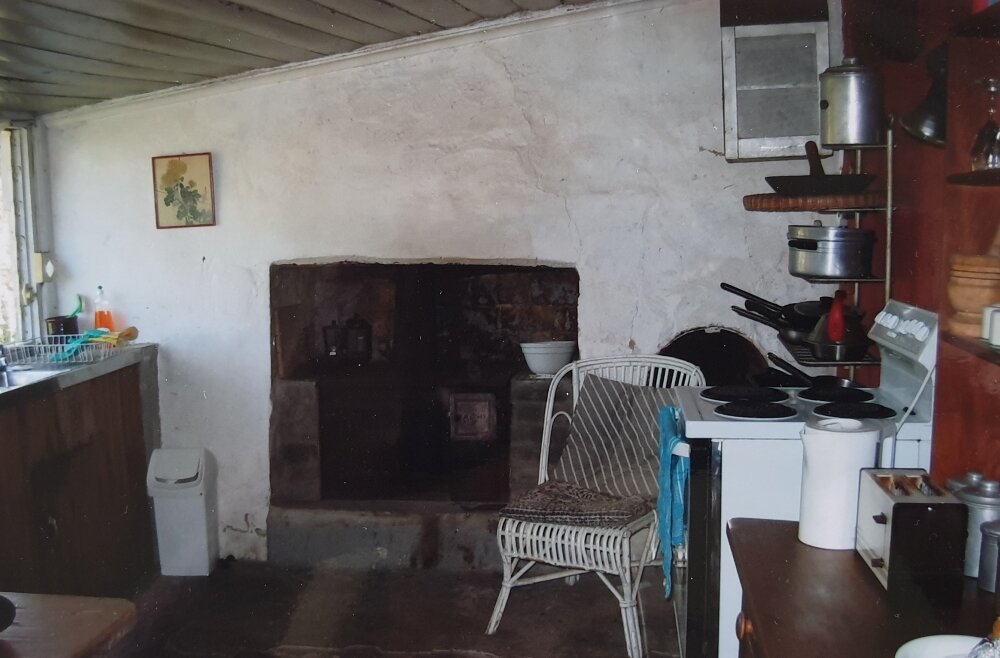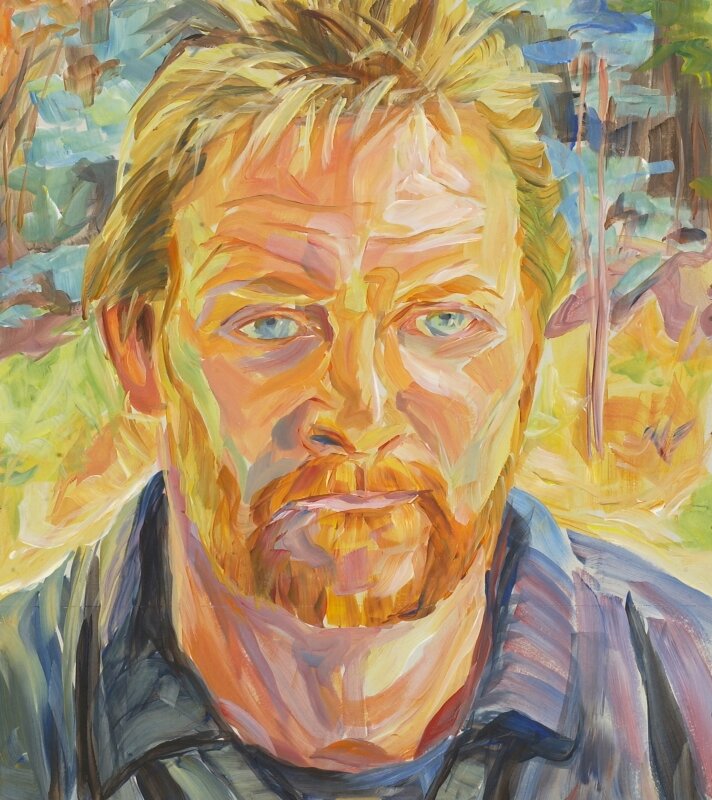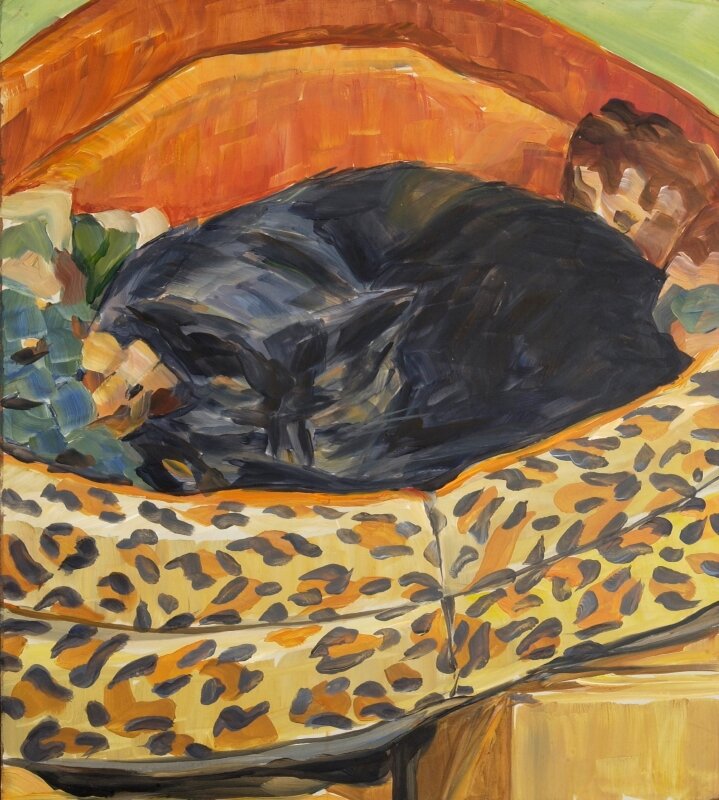In Face of Isolation
Attracted by the historical significance and geographical isolation of the old gold mining towns of Hill End, NSW and Walhalla, VIC, Manning wanted to discover what had become of these once thriving towns of thousands.
Who lived there now, miles away from services most of us take for granted, amongst the historic remains of a bygone era and the ever encroaching bush?
Hill End School. 19 suspended boards acrylic on masonite total size 122 x 238 cm
Finalist Alice Prize 2006 NT.
Created through two artist residencies in the historic gold mining towns of Hill End, NSW [Bathurst Regional Gallery Hill End Residency Program and Walhalla, VIC [self initiated, supported by The Walhalla Heritage League and Regional Arts Victoria], the series In Face of Isolation captured a moment in time in the life of those towns through the faces of the local people.
Hill End Public School was a finalist in the 2006 Alice Prize, NT.
Hill End, New South Wales.

Jess Gilmore

Jade Williams

Simon Simpson

Head Mistress Winsome Price

Denisha Tyler

Hill End Public School

Alina Tyler

Tanyha Lawler

Joshua Dolbel

Kylie Simpsom

Jeffery Kimm

Kackson King

Lucy King

Jack Lawler

Brent Lawler

Greg Gilmore

Teacher Gillian Groves
'Hill End Public School' 19 panels depict students and staff around an image of the School. A country school with Headmistress and one full time teacher, the 17 students of all ages work together in a single class. Manning painted everyone in sittings of one and half hours or less, she also initiated a self portrait project with an exhibition combining students and her own works at the local church.
Denison Street, Hill End. acrylic on masonite 33 x 184 cm
Panoramic Vista, Hill End. acrylic on masonite 28 x 184 cm
The Inhabitants of Hill End
The Mobbs. x 5 panels 30 x 26 cm acrylic on masonite
The Mobbs
Hill End has attracted many artists to its streetscapes and buildings from the village’s 1870s goldmining heyday. In August 1947 Donald Friend and Russell Drysdale arrived, the former purchasing a cottage in Hill End now called Murrays Cottage. Visiting artists included Margaret Olley, Jean Bellette, Paul Haefliger, David Strachan and Jeffrey Smart. Eventually Bellette and Haefliger also bought a cottage. Haefligers and Murrays cottages are now part of the Hill End Artists in Residence Program.
Members of the Mobbs family not only remember Donald Friend but Albert Mobbs as a boy posed for Russell Drysdale’s The Cricketers. (1955).
Deserted Cottage acrylic on masonite 33 x 116 cm
Hill End Panel I. x 21 acrylic on masonite panels each 30 x 26 cm
Hill End Panel II. x 15 acrylic on masonite panels each 30 x 26 cm
Sunset over Haefliger's Fence acrylic on masonite 29 x 120 cm
Collection Bathurst Regional Art Gallery.

Spring Hill End acrylic on masonite 96 x 124 cm

Dance Party at Hill End General Store acrylic on masonite 87.5 x 120.5cm

Kitchen

Studio

Outside Dunny

Haefligers Cottage
Walhalla, Victoria.
Looking Down Walhalla acrylic on masonite 63 x 26 cm
Spett's Cottage acrylic on masonite 63 x 26 cm
Walhalla in Victoria’s Gippsland developed in the gold rush of late 1862. Also a town at the end of the road it contrasts with the Hill Ends topograhy and climate, being in a steep sided valley surrounded by alpine wilderness. A few committed residents remain all year in the town which now survives predominatly on tourism.
Inhabitants of Walhalla
Walhalla Panel I. x 14 acrylic on masonite panels each 30 x 26 cm

Jim Anderson

Lois Dye

Garry Grant

Mick Proelss

Angela Grant

Bruno Precious

Andrew Stephens

Rhonda Aquillina

Milly

Norm Aquillina

Michael Leaney

Colin Sinclair ( Sheriff )

Ian Dye
Walhalla Early Morning. acrylic on masonite 46 x 83 cm
Walhalla Panel II. x 18 acrylic on masonite panels each 30 x 26 cm

Distant Landscape

Ollie Dobratz

Masonic Lodge

Julia McLean

Lindsay George

Harvey Hutchinson

Mullock Dump

Caroline Jones

Fossiking Box
Walhalla Dusk acrylic on masonite 58 x 92 cm
Using a technique she named 'fast heads', 78 people [aged from 4 to 80 years old] and 3 animals were each painted from life in one and a half hour single sittings in homes, the open air, pubs and even down the Walhalla Mine. To place them in context the portraits were combined with landscapes and still lives.
’In Face of Isolation’ was first exhibited in Melbourne at the Catherine Asquith Gallery in 2005, then the Hill End component with some additional works, toured to Hill End Art Gallery and Bathurst Regional Gallery NSW in 2006 when Manning was given the opportunity of a further residency.





















